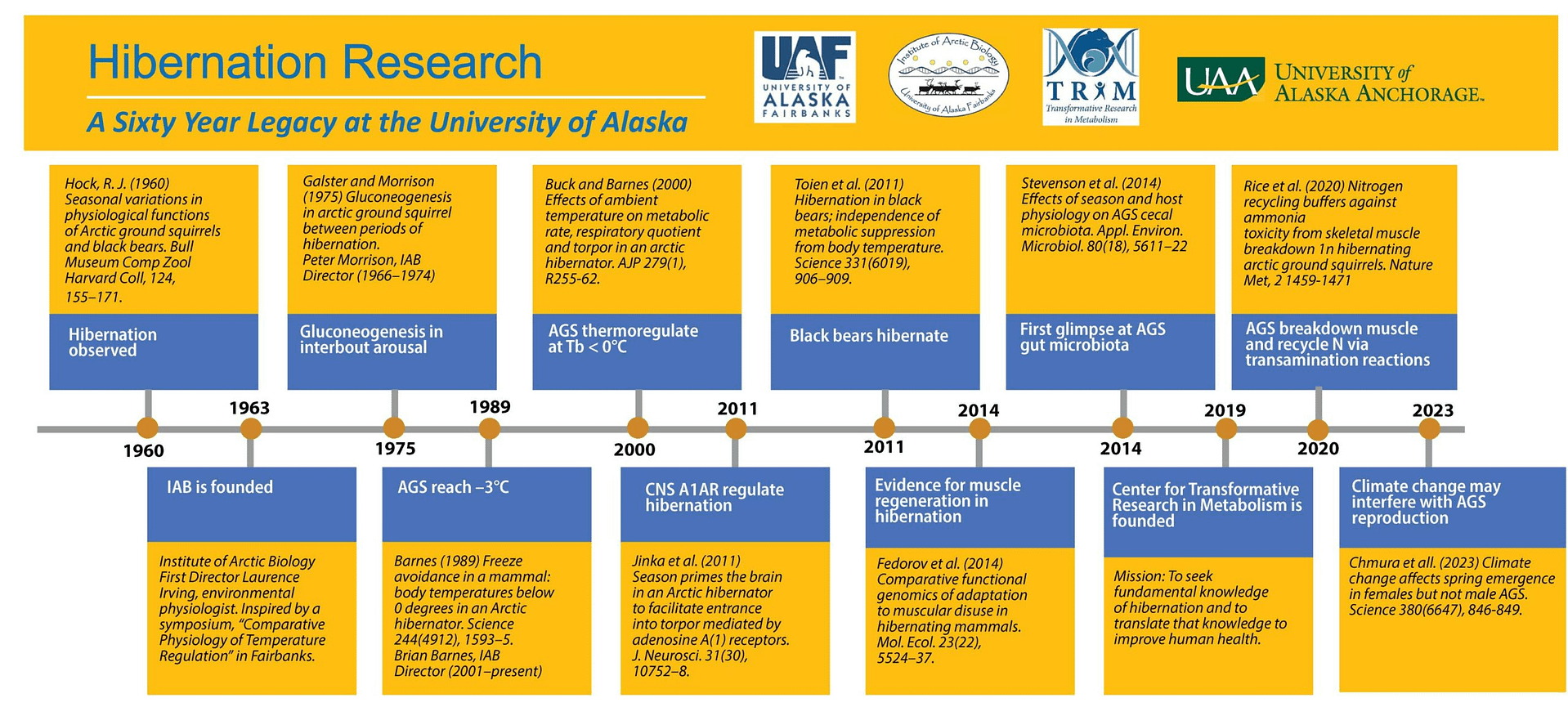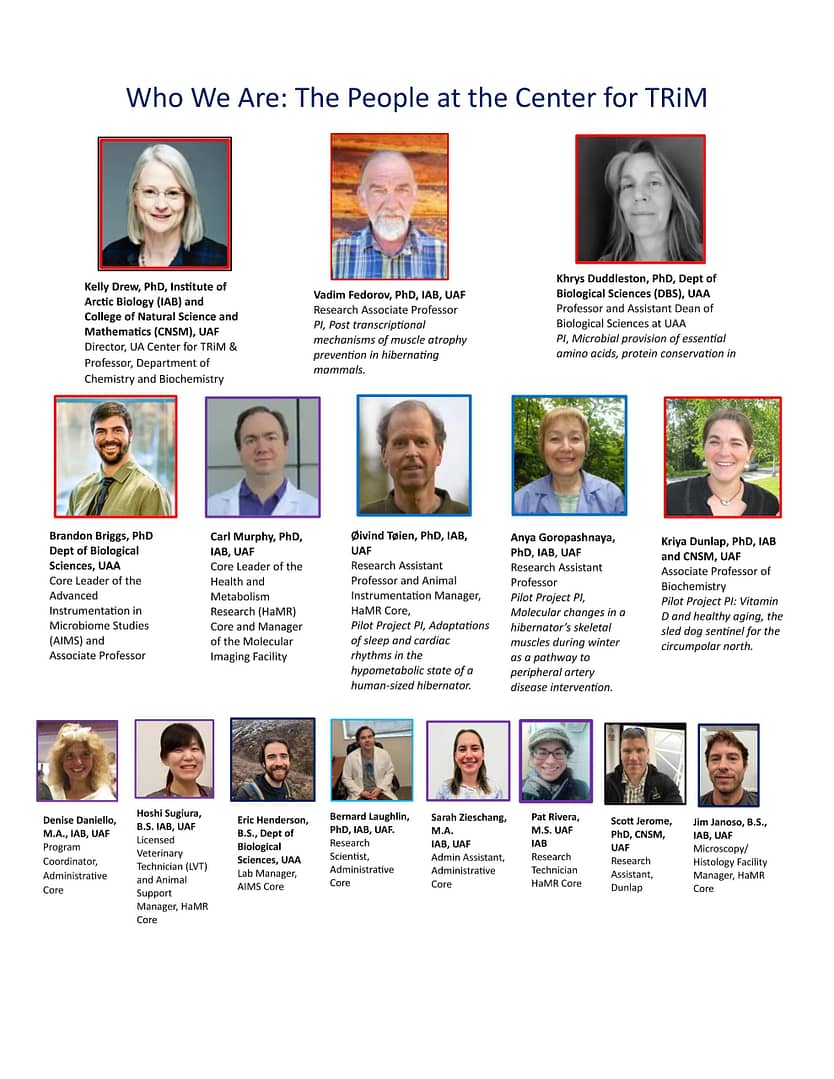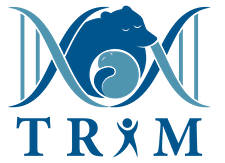The NIH COBRE-funded Center for Transformative Research in Metabolism (TRiM) at the University of Alaska is housed within the UAF Institute of Arctic Biology (https://www.iab.uaf.edu/) and collaborates with UAA as a partner institution. The center supports interdisciplinary biomedical research to study hibernation and metabolism with the long-term goal of developing therapies to treat metabolic diseases such as diabetes, obesity, sarcopenia, and cardiovascular disease. Center supported research uses genomic, proteomic and metabolomic data to inform target identification, and in vitro and in vivo studies in non-hibernating species to confirm efficacy of target manipulation. This work is expected to enhance healthy aging and to lessen the burden of metabolic disease and trauma.
The timeline below illustrates 60 years of scientific investigations at the University of Alaska in the field of hibernation research. The Center for Transformative Research in Metabolism builds on this intellectual infrastructure.
OUR VISION
OUR MISSION
- T for Team Science: Multiple, diverse perspectives and expertise empowers great and innovative science.
- R for Respect: Respecting each person for their unique perspective, expertise, and contribution to the overall effort.
- I for Integrity: Helping people to be the best at what they do best and keeping a high ethical standard.
- M for Motivation: Motivating oneself and others to do the job better than it has been done before in order to create a cycle of empowerment and accomplishment for both the scientific community and the Institute.
OUR VALUES


TRiM Specific Aims
The Center for TRiM has four overall specific aims:
- Specific Aim 1
- Establish an organizational structure and research infrastructure comprised of an Administrative Core, an Advanced Instrumentation for Microbiome Studies Core, and a Health and Metabolism Research Core that will support and promote a multi-disciplinary framework to define mechanisms of metabolic adaptations in hibernating mammals.
- Specific Aim 2
- Enhance the careers of PIC project PIs as well as new investigators leading pilot projects by using an innovative approach of guided discussion and collaboration plans to optimize effective advising by established NIH-funded investigators to compete successfully for NIH individual research grants.
- Specific Aim 3
- Support research projects and pilot projects aimed at developing an understanding of physiological, genetic, and gut microbial mechanisms in hibernation and how these mechanisms may play a role in treating disuse muscle atrophy or sarcopenia.
- Specific Aim 4
- Support clinical research projects related to the theme of the Center.

